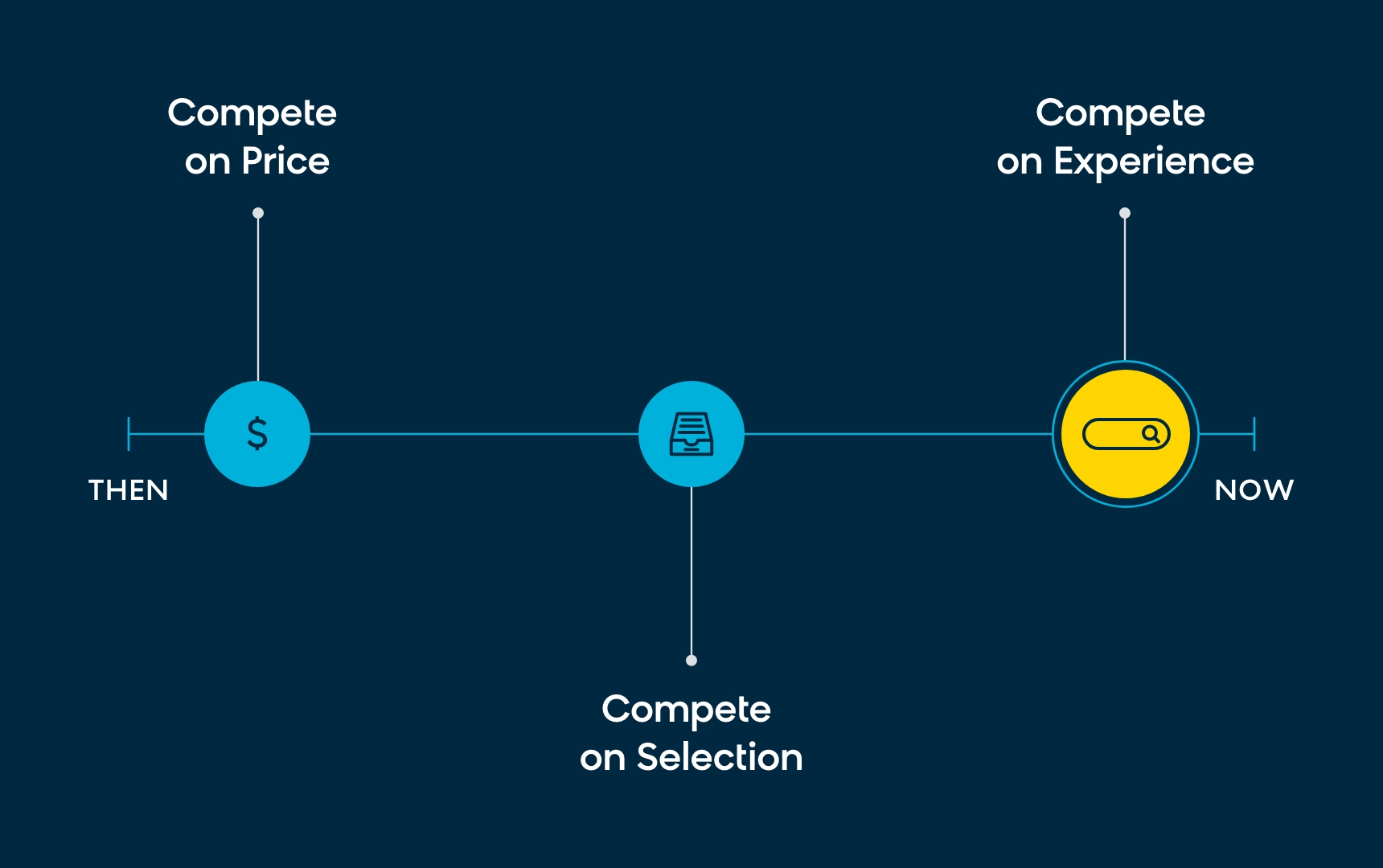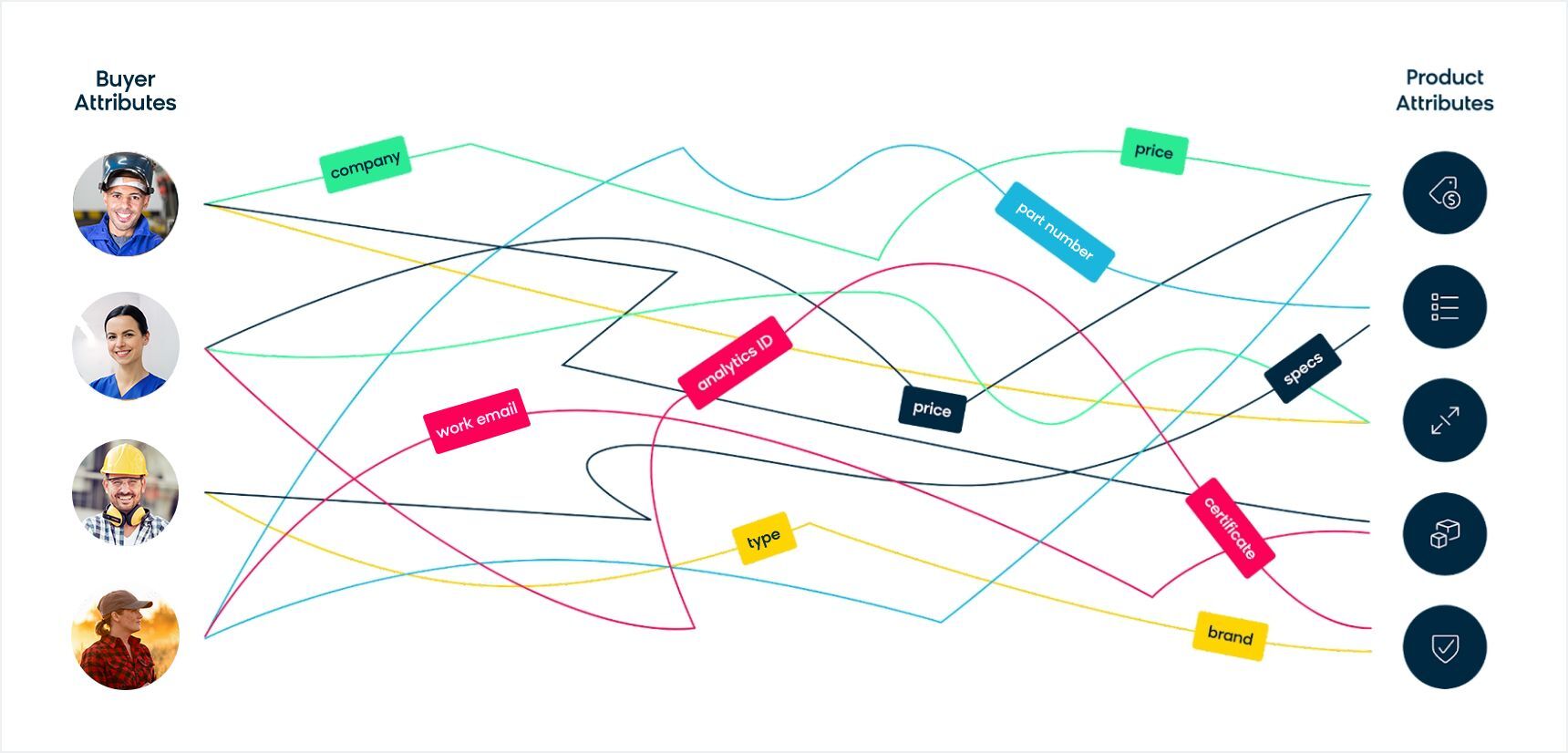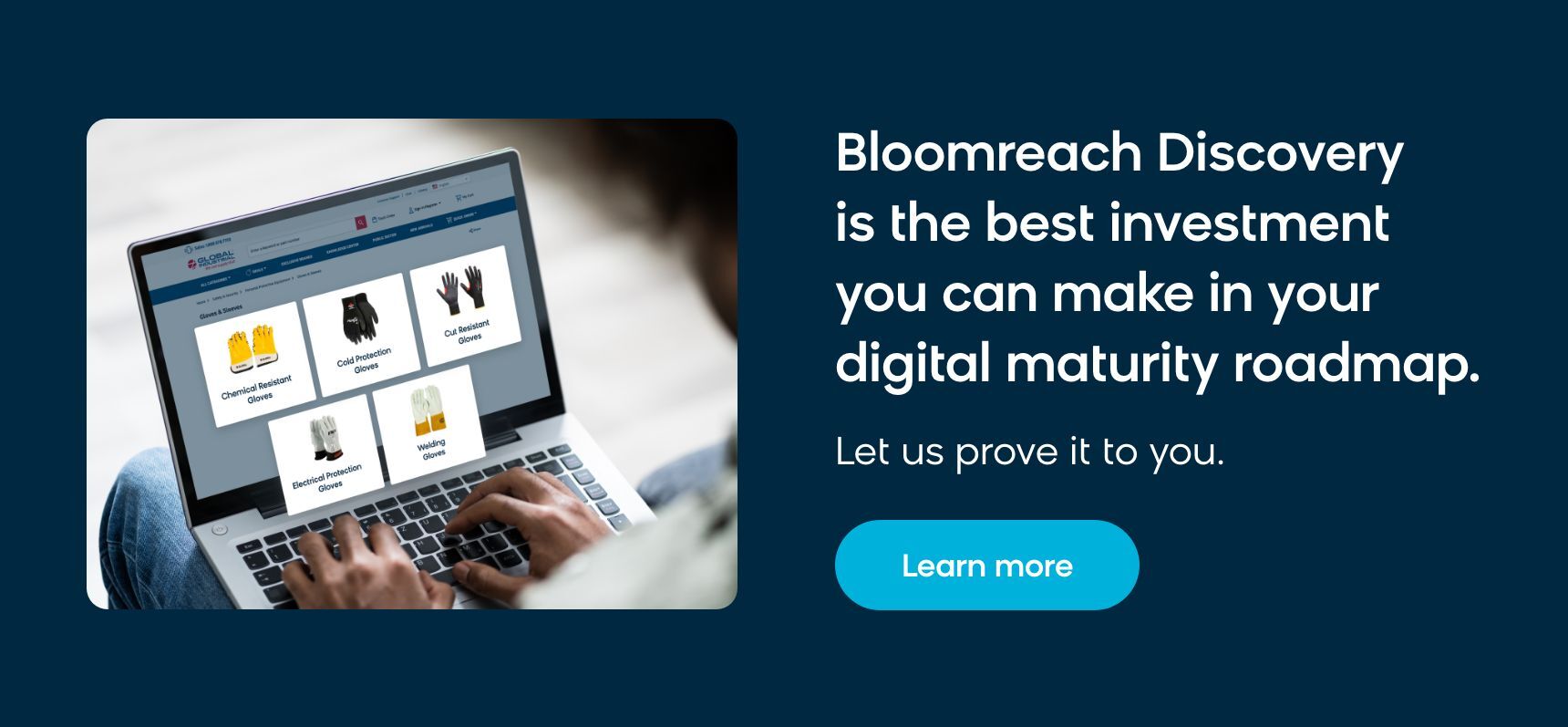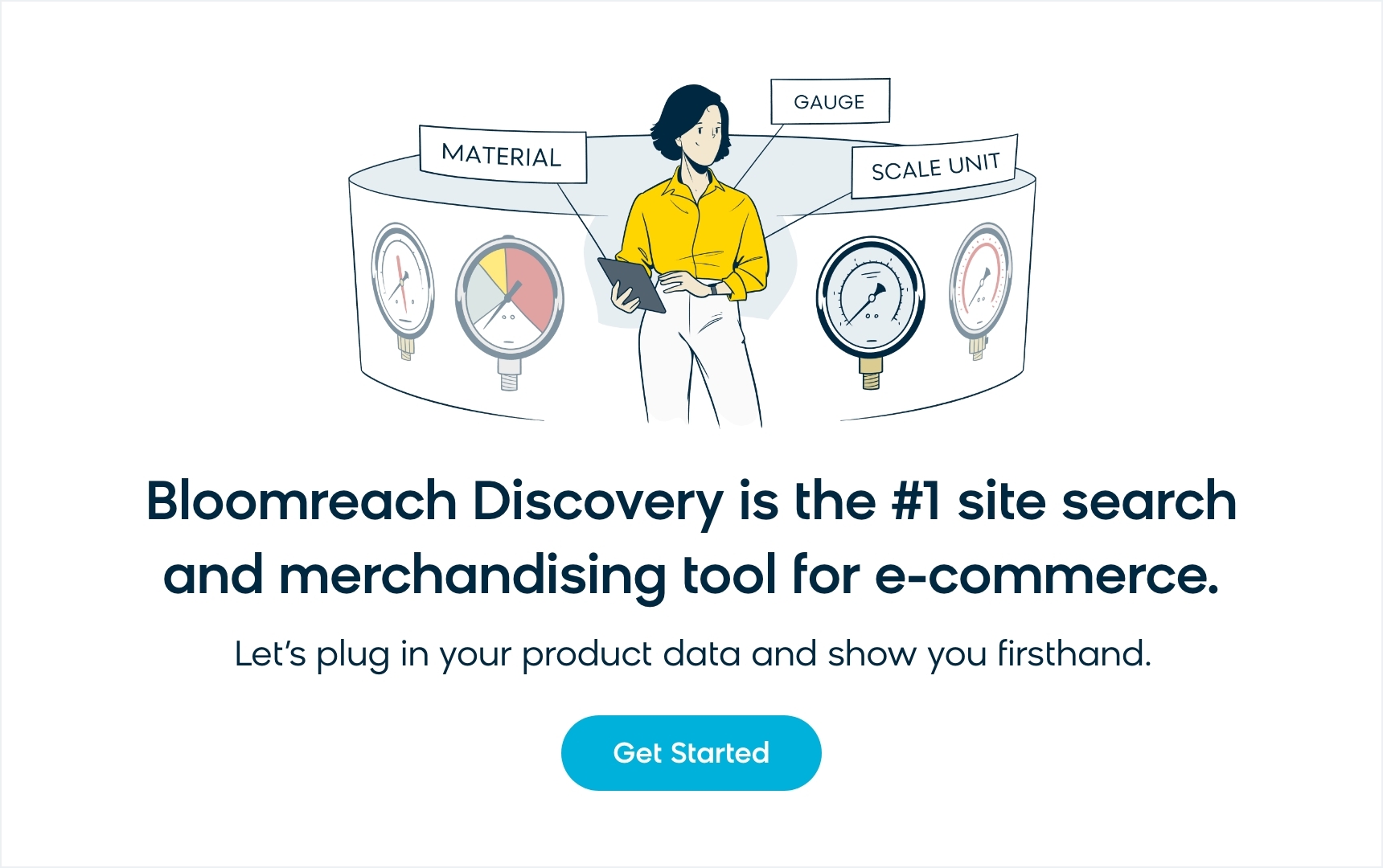How Distributors Can Compete on Experience With a B2B Search Engine
By Kait Spong
01/24/2023

Introduction
Don't let anyone tell you otherwise: The interest in B2B digital commerce has existed over the past 30 years. From all the marketplaces that launched in the 90s to the ecommerce platforms, payment systems, and digital advertising tools that have surfaced over the past two decades, there’s been no shortage of new technologies that have exuded potential and generated excitement among industry leaders.
Pair this oversaturation of tools with the onset of COVID-19 and a major shift of demographics within the workforce, and it’s easy to see why digital has become a priority in the B2B market for the past three to five years. While we still wholeheartedly believe in the value of salespeople, the changes in buyer demographics and preferences have long indicated that evolution is needed — particularly for B2B distribution, where the traditional, outside sales-driven model has remained relatively unchanged for 50 years.

But as much as things have changed — and will continue to change — much of it has also remained the same. The rush of new players into B2B digital commerce has not created a new market. In fact, the market remains the same, with the same products from the same manufacturers being purchased by the same buyers at the same companies to solve the same business problems.
Your buyers, like the consumers they are in their personal lives, are simply looking for seamless digital experiences — one that is helmed by your ecommerce site's search engine. By investing in a B2B search engine that makes product discovery seamless, you'll break away from the B2B pack and compete on experience. Before we delve into that topic, let's take a look at how digital commerce has evolved for distributors.
How Has B2B Digital Commerce Evolved for Distributors?
In the earlier days of B2B digital commerce, there were two common strategies to drive growth: competing on price and competing on selection. With the few distributors online at the time, either of these strategies could be successful in driving web traffic and transactions. Certainly, many of the largest ecommerce marketplaces today started by offering a massive selection at very aggressive pricing. For example, Amazon did not turn a profit for six straight years, but the powerhouse marketplace did grow a massive user base who all learned how to browse its web pages to find what they needed.
With the explosion of brands in the marketplace, there isn't time to experiment with this notion anymore. When competing on experience, as opposed to price or selection, you’ll enjoy low overhead, significant results, and high satisfaction on both the business and consumer end. But what does it mean to compete on experience vs. price or selection? In this section, we will show you why it's your best bet when winning over prospective buyers.
Competing on Price
At the start of B2B digital commerce, many distributors stood up stores online with similar selections, data, and data sources. Eventually, they began pricing products at the lowest price, using search engine optimization to make their websites findable online and win new business. Sounds like a pretty simple formula for success, right?
But it only worked for so long. While the objective of this strategy was to grow the business by being a price leader, it was ultimately an unsustainable model, as many businesses never ended up seeing a return on their investment (Let’s face it: We all can’t be Amazon). If this strategy did work, it was only a short-term boost to revenue and fizzled out shortly after implementation.
Competing on Selection
Around 2010, leaders in ecommerce realized that the scale of their products could provide a competitive advantage online. In turn, the next phase of B2B digital commerce began emphasizing “the endless aisle” and boasting more selection. Instead of competing on the best price, businesses could position themselves as a destination that could sell everything and anything.
Unfortunately, the endless aisle approach comes with many risks. First, too much choice is never a good thing and can often lead to “analysis paralysis,” where a prospect is so overwhelmed with the selection that they don’t take action and make a purchase. Second, the potential revenue of each stock keeping unit, or SKU, cannot scale with the count alone because there are costs associated with managing each SKU. This means that each SKU's potential lies in its discoverability through site search engines. At the end of the day, your selection doesn’t mean much without the proper findability. But it can easily become complicated when attempting to take all of the buyer and product attributes into consideration.
Competing on Experience
Now that we’ve poked enough holes in the “compete on price” and “compete on selection” approaches, we can move on to the present state of digital commerce. Forward-thinking companies — inside and outside of the B2B distribution space — are now investing in product discovery to make their full selection of products easier for buyers to find, research, purchase, and reorder.
It all starts with a good content marketing strategy that's executed with strategic keyword research. This way, you can bring buyers to your website through organic search traffic, paid search advertising, social media marketing, and other forms of digital marketing. From there, your brand needs to provide a cohesive journey on your digital commerce website, starting with your search bar to transform a purely transactional site into one that boasts findability, information, and training. In becoming a valuable source of expertise, you'll make the buyer's journey an easy one, which is lightyears ahead of an approach that centers on massive selection or cheap prices.
Nowadays, new buyers often go through a “shakedown period,” where they assess how good the distributor’s website is at helping them do their jobs. During this time, they'll ask the following questions: “Does the keyword search understand my query?” “Can I search by part numbers?” “If 25 different product versions are offered, is there enough information for me to make a decision?” If your site search and discovery process is doing its job, the answer to all of these questions should be a resounding "yes."
What Does Digital Maturity Mean in Distribution?
Even through all the different iterations of ecommerce, many distributors launch their websites with the idea that they will immediately draw new customers solely on this action. The reality is that there are a lot of new distribution, manufacturer, and third-party websites out there, and it’s not enough to “show up” to the online party. Yet, sales departments still continue to evolve and become increasingly digital. Believe it or not, digital-only or hybrid sales roles are growing at almost twice the rate of conventional sales.
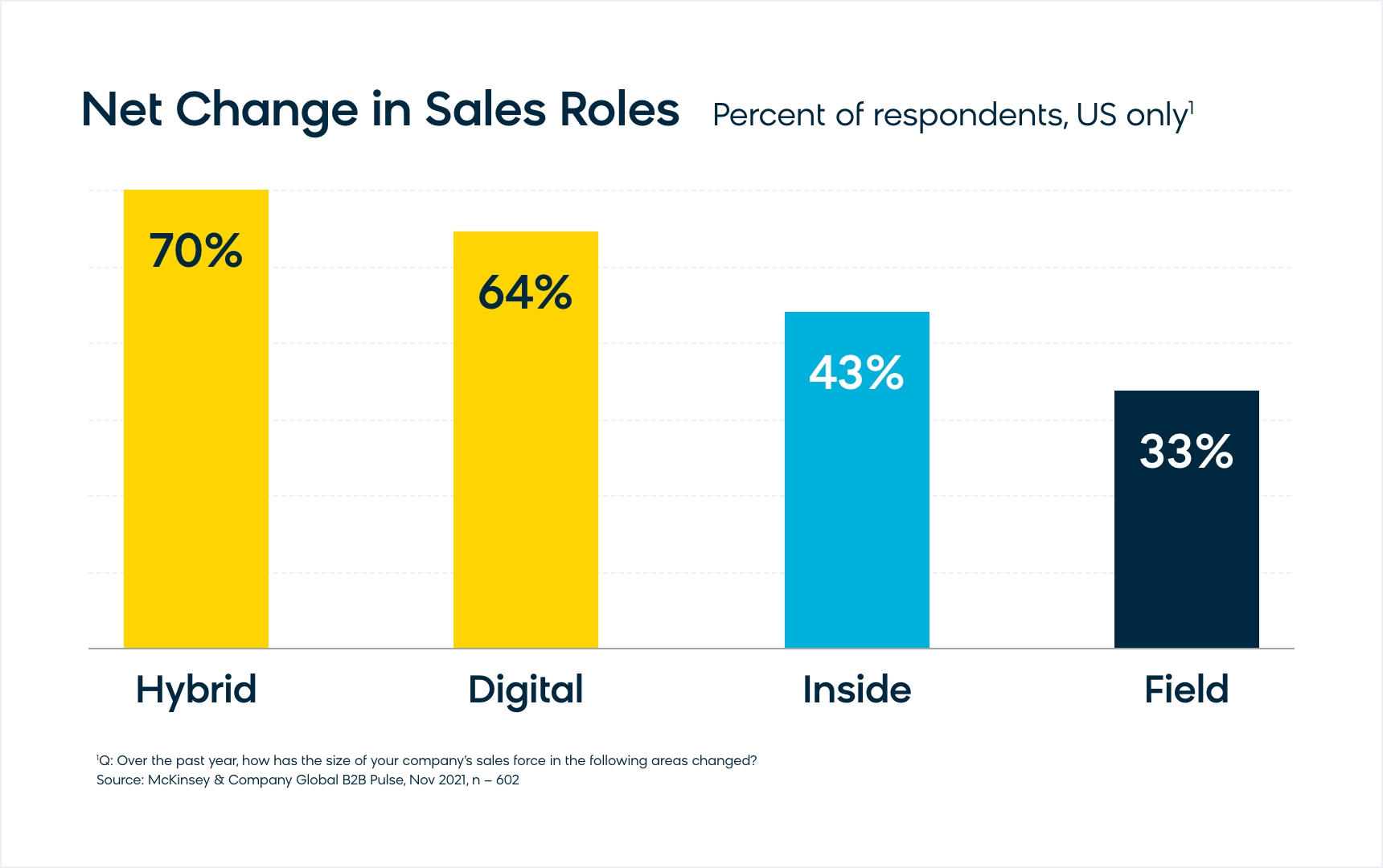
Despite this, less than half of sales leaders in distribution believe their current team has the skills needed to succeed in digital. For those not already working towards digital transformation, what does it mean to “go digital,” and how should the process unfold? To ease the transition and give your business an edge, your distribution company needs technology that doesn’t require coding or technical skills, but still provides the ability to optimize aspects of your site, like search engine results, for revenue. Here's how you can get started.
Foundation
Step one of your B2B digital transformation journey is to lay the foundation. For some, this can be the most challenging part of the process. But it’s also the most important, as it allows the next steps of the process to take place. At this point, your ecommerce sales represent less than 10% of your business, so cross-functional alignment will be key in taking this first big step. Marketing, sales, product, and senior leadership must all be on the same page with a unified strategic focus and build a complete roadmap toward transformation.
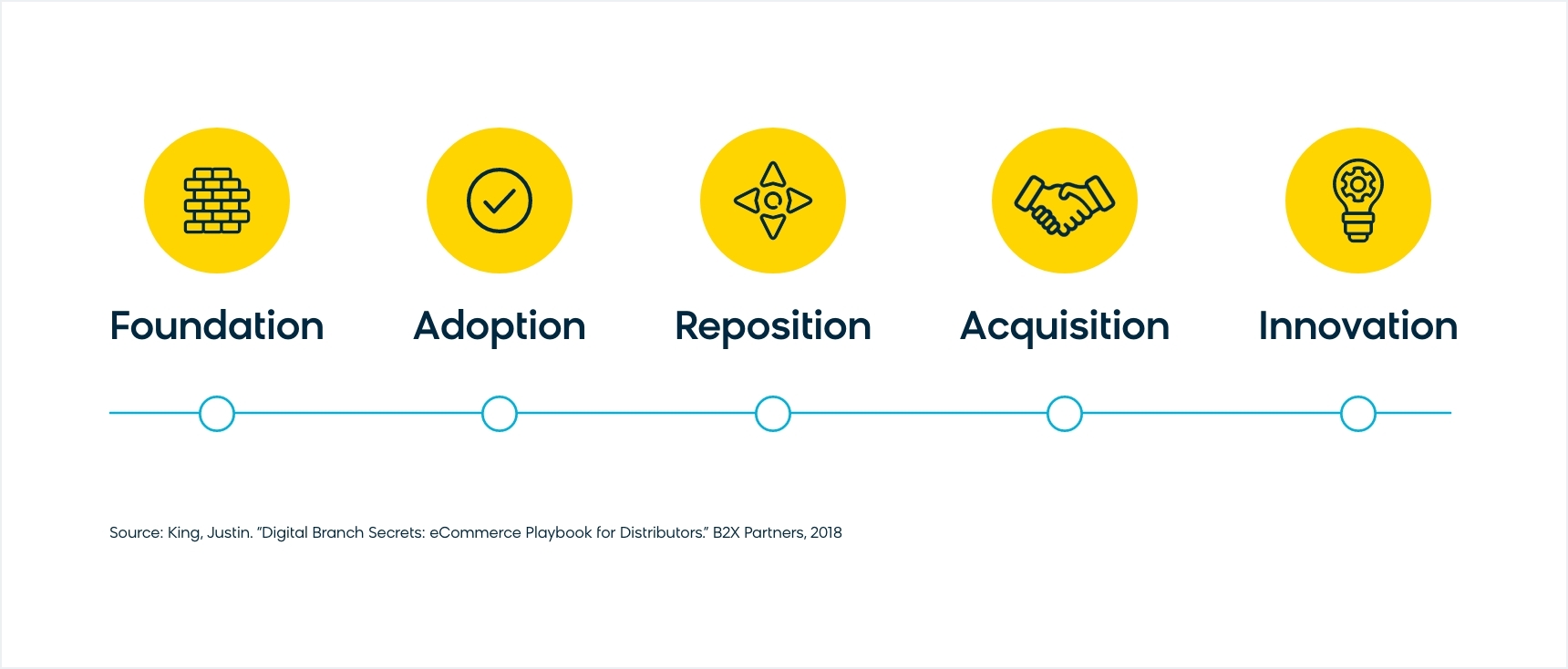
Once you have your ecommerce priorities in order, you can move forward with constructing the “Digital Branch” of your company, which should consist of at least one decision-maker, an IT manager, and a business or marketing leader. You need this branch to evaluate various tech objectives and selections, from your SEO agency and ecommerce platform to your content management system (CMS) and product discovery tool. Will you choose a monolithic platform that offers a little bit of everything or compose a headless model that cherry-picks the best point solutions for each objective? It’s up to you and your greater organization to decide which direction works best for your short- and long-term goals.
Adoption
Now that all the contracts are signed and the tech rollout has begun, it’s time to do the heavy lifting, deepen customer adoption, and move forward from beta testing the solution(s) of choice. Since your ecommerce sales sit somewhere between 10 to 20% range at this point, your brand needs to think about how your digital commerce growth will look two years from now. During this phase, data becomes increasingly important, and the Digital Branch of your organization needs to incorporate a team member who is savvy with numbers (e.g., Data Analyst or Digital Marketing Manager).

If you choose a worthwhile digital experience solution, your brand can fine-tune the product discovery experience on its websites without having “perfect” optimized product data or investing further with a secondary solution. Instead of throwing away the buyer's behavioral data (the largest wasted digital resource in B2B), distributors can take advantage of it to refine their purchase experience and lead buyers to the right products.
Reposition
As you know, B2B is an incredibly diverse market, with many industries that use a host of various products to solve a number of problems. And here lies a common issue with legacy product discovery platforms. Unlike certain point solutions on the market, legacy platforms rely on broad measures of relevance across industries. Everyone will see the most popular products first, but those are not always the most relevant ones to that specific buyer in their vertical. So, if one pair of “work gloves” is the most popular for a seller, it shows up as the top result for all customers even if it’s not appropriate to them in particular.
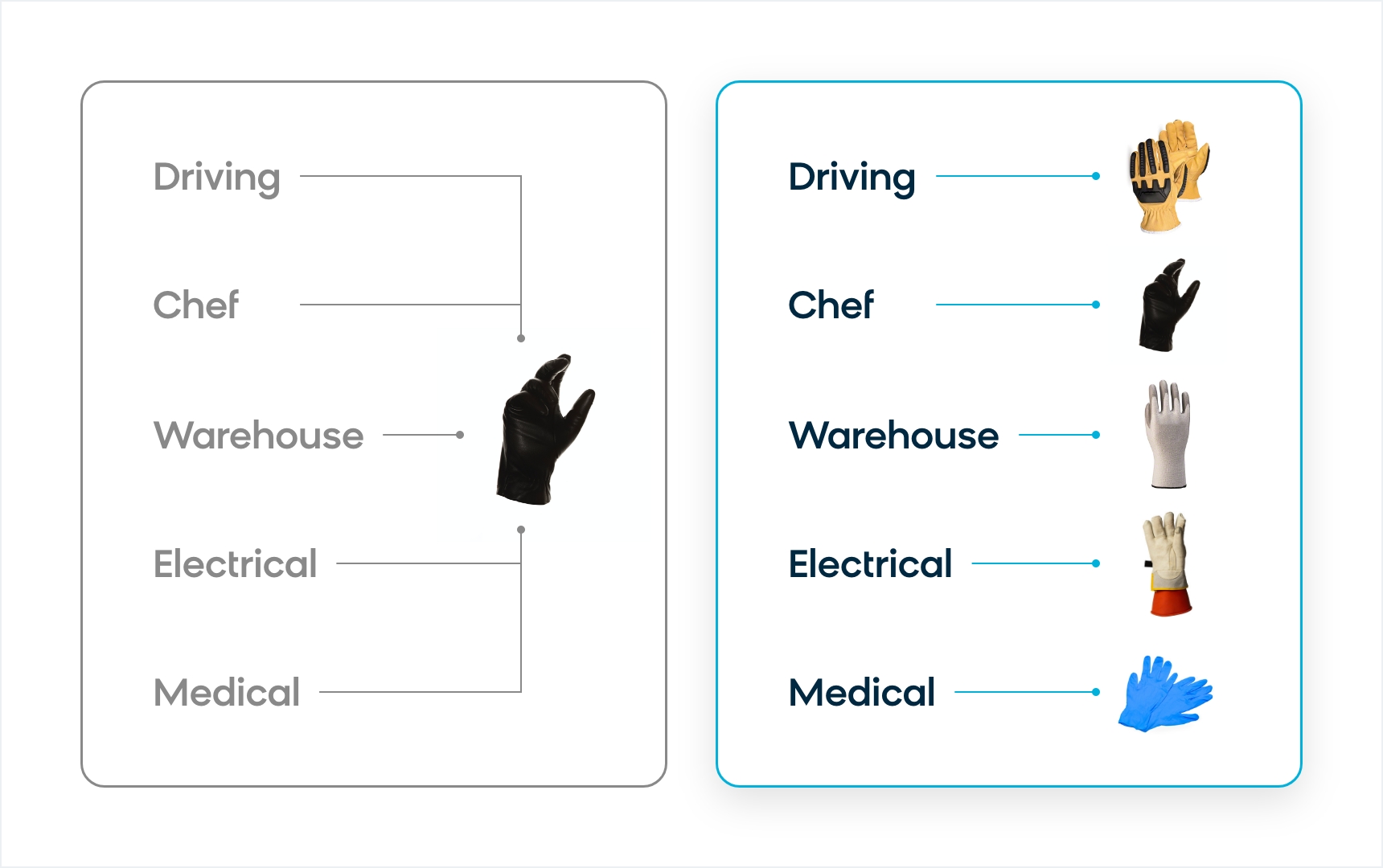
As your brand's ecommerce approach already accounts for 30% of total revenue and is pushing toward 40 to 50%, you should be regularly using artificial intelligence, specifically machine learning (ML), to track buyer behavior. Then, the digital experience presented to each buyer is distinct and highly relevant to their business and pain points. Now, a search for “gloves” doesn’t just return a generic “work gloves” product as the top result. Instead, your customers can see the products that make sense to them (e.g., the contractor sees job site safety gloves, the plating factory manager sees chemically resistant gloves, and the nurse sees medical-grade nitrile gloves). By understanding the buyer, your distribution business will increase revenue and efficiency across the board and continue to prosper digitally.
Acquisition
It's finally the moment you’ve been waiting for. We’ve reached the fourth stage of digital transformation, which is the step most B2B distribution professionals imagine themselves starting with. As you’ve learned along the way, however, ecommerce websites just don’t appear online and skip to this very valuable acquisition stage — even though that’s how we all wish it would unfold. Now that your brand has crossed the threshold of 60% of total revenue from your ecommerce efforts, you can finally focus on online and search engine marketing, new buyer acquisition, and brand differentiation. But don't run over to Google Search Console just yet!
Why? Well, this stage isn’t just about acquisition. Your adoption plan should never cease to exist as your brand digitally matures. To survive, you must continue to push the envelope. At this point, you should be further building your Digital Branch (adding SEO Managers, Social Media Specialists, Copywriters, etc.), advancing A/B testing initiatives, and improving user experience through refined search results, expanded content offerings, and enhanced design elements.
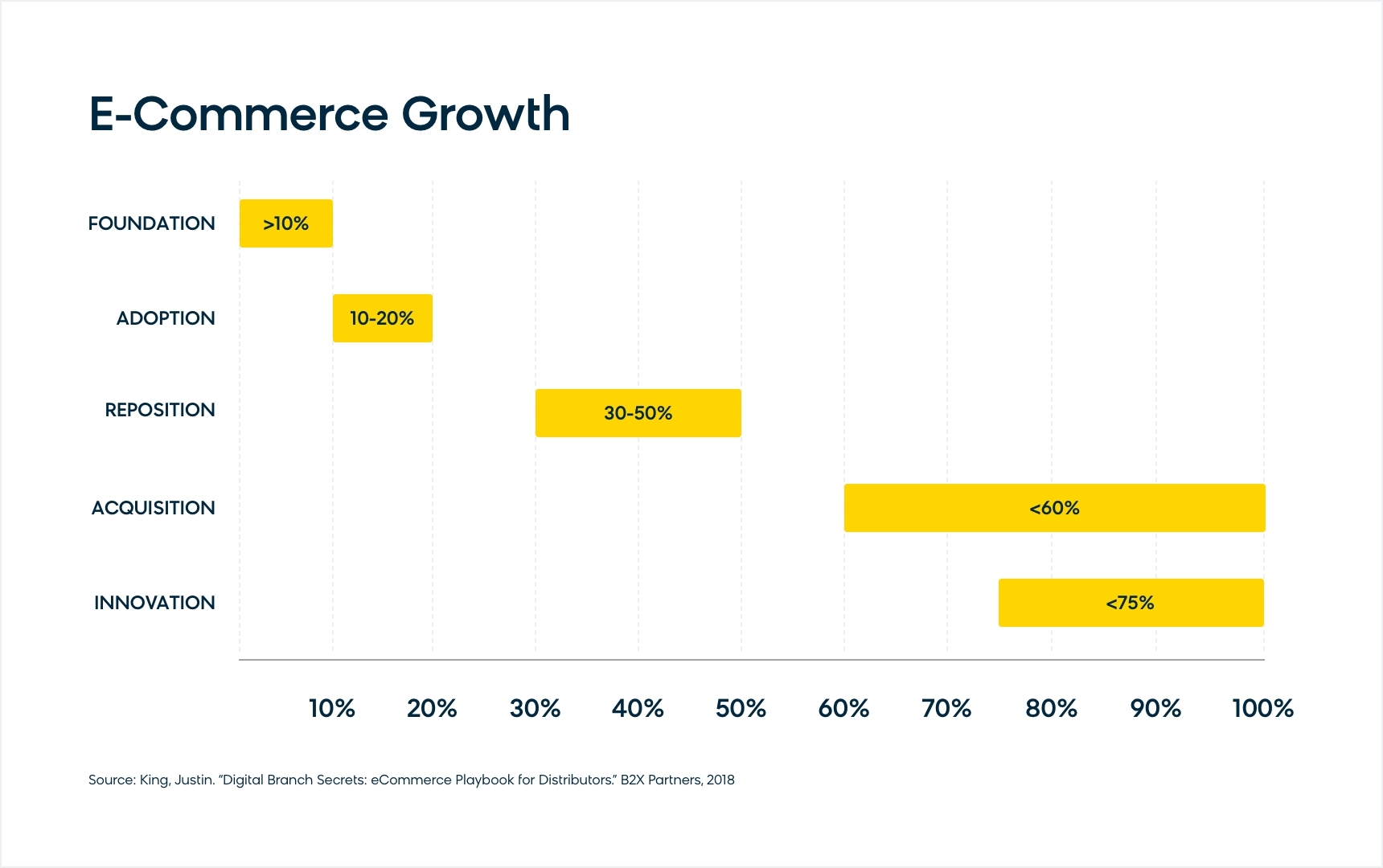
Innovation
In digital commerce, the work is never finished, and that’s the beauty of it for those who are innovators at heart. While you now have a good foundation in place and have likely increased your ecommerce sales to 75% of total revenue, there’s always room for more innovation, especially since you’re now a distribution company that puts digital commerce first. When you align your brand with your customer’s preferences, you can continue your mission of answering their biggest questions and solving their toughest issues.
Don’t be afraid to disrupt current processes with some of these hard-hitting questions: “How can you use a tech start-up mentality to keep pushing the limits of your distribution company?” “What steps should you take to continually build a culture of innovation among your various teams?” “Are there technologies out there that can take the risks necessary to push you beyond the 75% mark?” Since you’re already in an innovative mindset, it should be easier to challenge the status quo of the slow-moving B2B market.
Is There Still Time To Meet Buyers’ Preferences for Online Experiences?
The short answer: Yes.
The long answer: If your B2B distribution company feels at a standstill with the digital transformation process, it’s completely understandable. As much as we’d like to tout that B2C approaches can be a silver bullet that will solve all of your digitization woes, the technical complexity of the products in B2B businesses makes digital transformation, from smart product discovery to detailed product information on a blog post or product page, more difficult to navigate.
The problems that need to be solved for B2B buyers are extremely diverse and highly specific. Because of this, portfolios contain much larger collections of products that are differentiated from one another by finer and subtler differences. This leaves enterprise-tier B2B companies (and distributors, in particular) managing very large selections, which can amount to millions of SKUs.

To add to the challenge, many distributors carry additional products that they choose not to display on their websites because of the effort it takes to manage that large of a selection. In conventional integrations that require batch updates, the cycle time can become tedious for any B2B professional, and it also makes any real-time accuracy of information next to impossible.
Luckily, there are solutions on the market that will ingest data feeds through APIs, recognize the changes that need reprocessing, and automate manual workflows to streamline product discovery and content processes. So, despite feeling stuck at square one, there is still hope for your B2B business. You just need to know what constitutes a “good” online experience first.
How Are “Good” Online Experiences Defined?
Like any technology, ecommerce tech is constantly changing. Some might believe that a shopping (or buying) experience consists of too many elements to truly dictate what creates a “good” online experience. No matter how complex the buying journey becomes, however, it all boils down to a simple step: making a website easy to use for any buyer — regardless of their level of product knowledge — without forcing them to shift the ways they seek, research, or purchase products.
In other words, there is no "standard" user interface, design, style, or terminology behind good online experiences. Each buyer is worthy of their own effortless, personalized experience on your ecommerce website — one that entices and encourages them to transact with your brand. So, what about straightforward product discovery? What does that look like? Well, it’s doing whatever you can to let the buyer choose how they want to seek out the product. Let them use the search terms that they feel are important or the spellings they prefer, and decide the order in which they discover the products. Put the power in their hands.
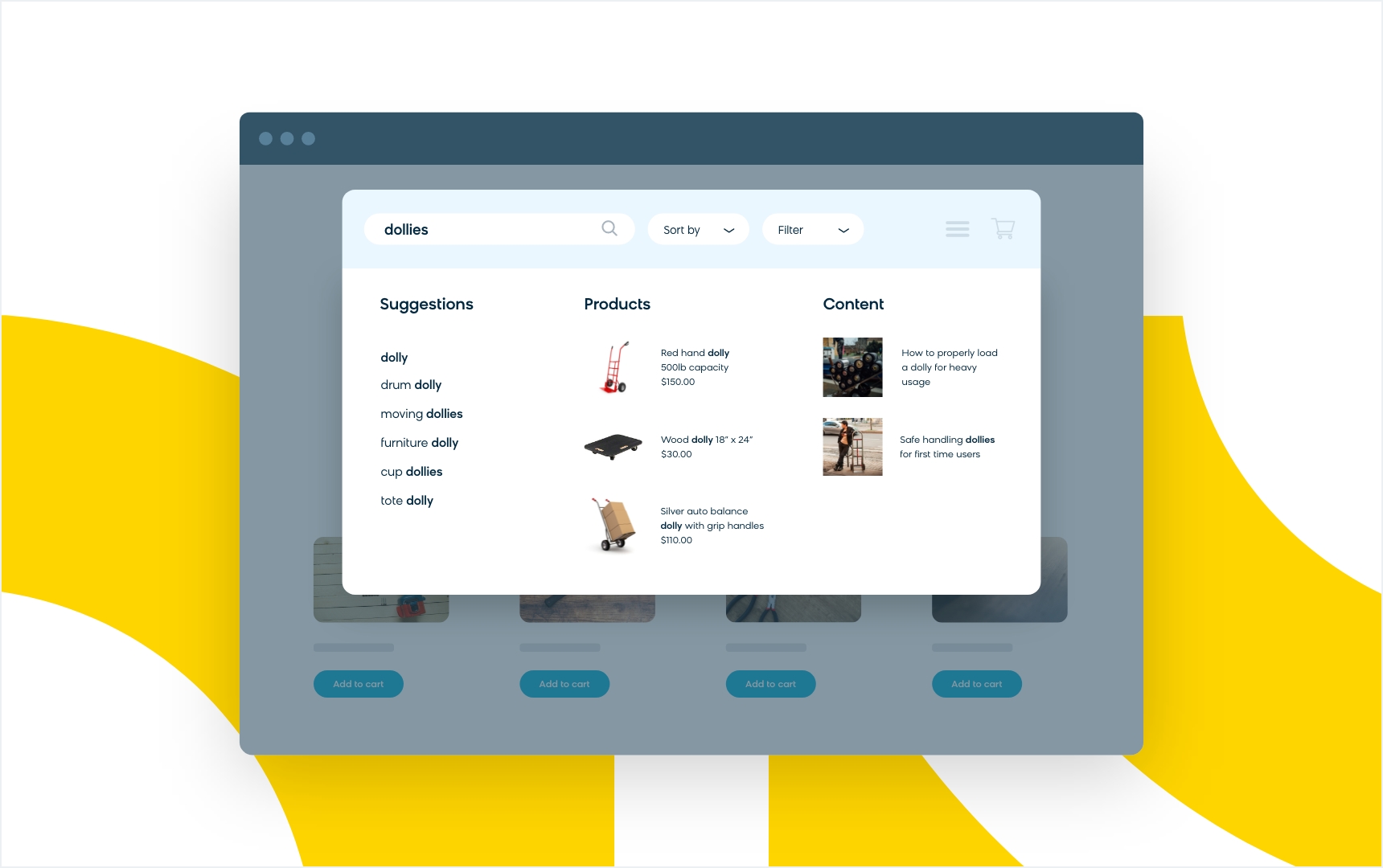
Here is where AI can support with both natural language processing (NLP) and ML. By aggregating the entire collection of terms and language used in a search query and comparing those to the products that are viewed as a result, AI can understand the intent behind terms that are new, regional, and/or industry-specific and quickly learn how to direct those search queries more effectively. As a result, the buyer doesn’t feel like the experience is “broken,” or worse, that the company doesn’t care about them or their business. Instead, they’ll feel heard and understood — even if this "hearing" only pertains to a field in a search bar.
Why Should You Start Your Digital Transformation With Product Discovery?
The product discovery phase of the purchase journey is an extremely critical aspect of the buyer experience. Not only is it a buyer's first impression of your brand, but it will also continually nurture the relationship even after the initial transaction.
To accommodate buyers who want to communicate with you digitally, your ecommerce website is the best method with the lowest amount of overhead. Using the power of your search bar, product and category pages, and recommendations, you can make product discovery easy and effective. Therefore, your site search bar needs to conduct the bare minimum to be impactful:
- Determine which products should be returned for a particular search query
- Detect a buyer’s pattern of activities that signal broader trends or preferences
- Arrange results in a meaningful way that encourages action
- Evaluate learnings from the collected discovery activities and use them to fine-tune future results
Ultimately, the ability of a distributor’s commerce website to detect, identify, and adapt itself based on how each buyer goes through the product discovery process. When product discovery performs poorly, buyers lose patience, and in today’s highly digital world, it’s easier than ever for them to hop over to your competitor’s site to see if a better experience can be found there.
If buyers cannot find a better experience there, they will often settle for one that is familiar, like Amazon Business. Be diligent about making product discovery effortless for your buyers, and you’ll unlock another channel of revenue for your B2B business.

The Bloomreach Discovery Difference for B2B Distributors
Now that you understand that the “B2C experience” everyone talks about in ecommerce just means that the site works, it’s easier to grasp why B2B distributors face a bigger challenge. Since B2B distributors sell products with minor differences to customers working for specific industries for a number of different use cases, AI is often more difficult to accept as a catch-all solution that will just swoop in and make everything better.
And this is true to a certain extent. AI is not an inherent solution to your most pressing problems. It’s a tool like anything else you use in your tech stack. What differentiates AI from other ecommerce tools is how it is designed, developed, and integrated. On that note, here is what sets Bloomreach’s AI apart from every other search and merchandising solution, especially when it comes to B2B distributors.
Semantic Search
There are search vendors who don't believe semantic search to be necessary for product discovery. However, these same search vendors are conflating semantic search with keyword matching. A true semantic search engine understands the entirety of a search query and doesn’t simply match keywords in the query to the keywords of the search results.
When it comes to Bloomreach in particular, our smart search bar has extensive dictionaries and multilingual capabilities. Our solution can identify words and separate product types from attributes, like compatible material, specifications met, cut type, and coating/finish. Take “machine screw,” for example. Our AI would separate the attribute (machine) from the product (screw), so there will never be a mix-up between “machine screw” and “screw machine” ever again. This combination of NLP and ML is referred to as “semantic understanding,” which is used in semantic search.
Part Number Search
It’s not just the product names that are complex in B2B, either. The part numbers themselves are also a massive aspect to manage since there are often multiple part numbers that apply to a single item. Distributors and manufacturers typically have different part numbers for the same item. To add to this confusion, third-party companies may even have their own number systems, and of course, there are industry-standard part numbers, as well. And perhaps, some customers want to search for a product by a partial number.
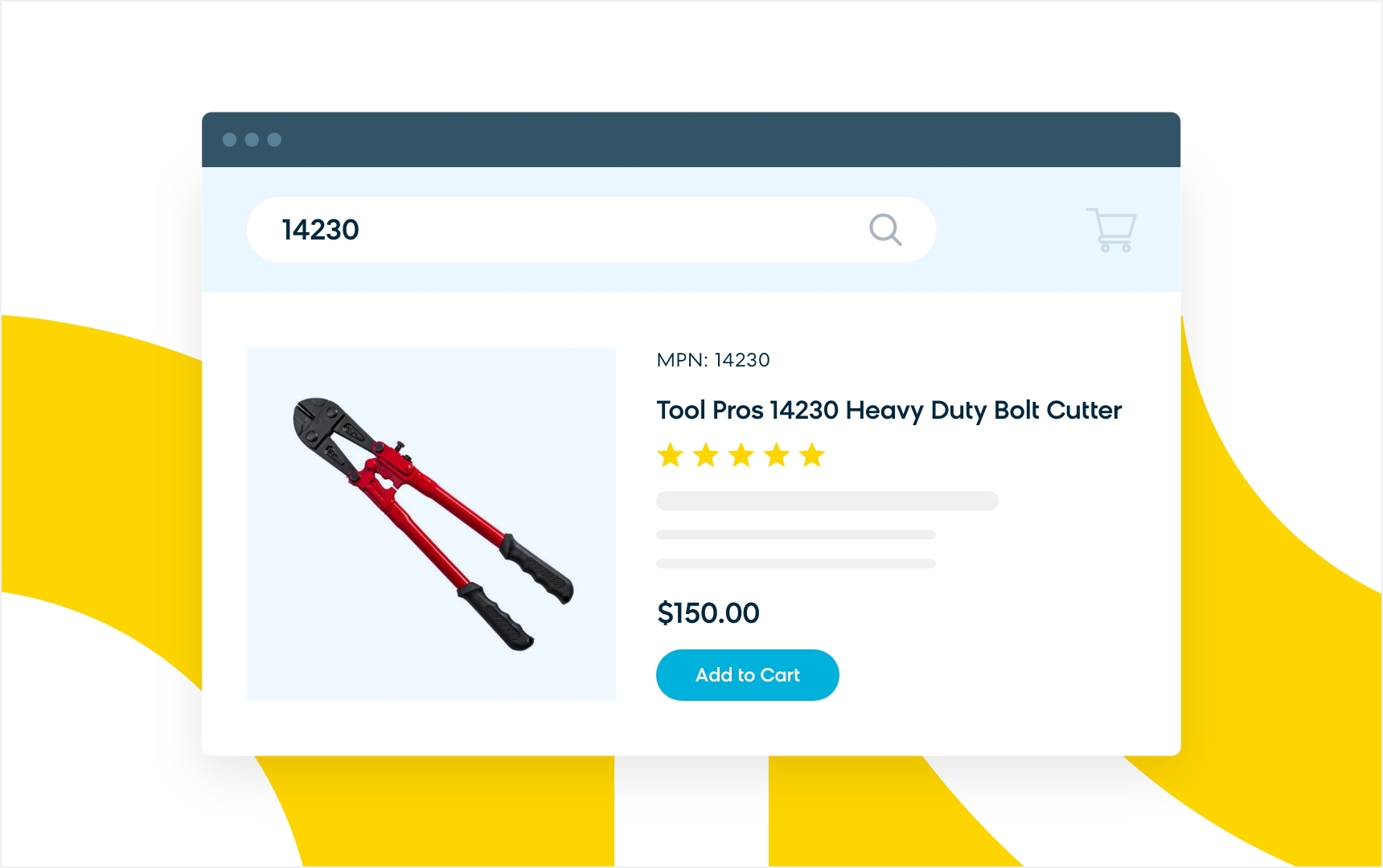
Considering the intersections between part number types, you need additional horsepower in your product search solution, so your team can handle part number searches and accommodate the vast, and often convoluted, range of part numbers themselves. Since part search is so specific, prospects might assume you don’t even carry the item if they can’t locate it on your website. But Bloomreach Discovery brings all of these product numbers together to help your ecommerce search engine recall them without the extra headache.
Custom Catalogs
Companies selling to consumers rarely have reason to limit the kinds of products their customers can buy. But again, the B2B market is different. Buyers may have regulatory or contractual constraints on the products they can purchase from a given company. Ultimately, this makes product discovery more challenging on your end, but that doesn’t mean it has to be a roadblock for your brand.
Bloomreach Discovery has catalog management features that can help you create and manage custom catalogs seamlessly across your portfolio. While managing custom catalogs is typically a significant limitation of search, especially for businesses with a large number of products and a variety of them to manage, product discovery technology, like ours, allows you to view, manage, diagnose, and explore the data that spans the entire buyer experience. The self-service manner of our catalog management feature gives you the ability to oversee the process, from feeding data into the catalog to configuring and verifying it in our search and suggest APIs.
Personalization
There are more dimensions to personalization in B2B. Different roles in various verticals might share particular preferences around the terms used to search or even in the items they purchase. These preferences are defined by the nature of their industry, the kind of work being done, and the geographical area in which they operate. This means, there are numerous factors to consider outside of the basic gathering and organizing of product or customer data in B2B. In B2B, personalization has to be better structured and strategically tuned to focus on how each customer falls into specific segments that represent different patterns of behavior.
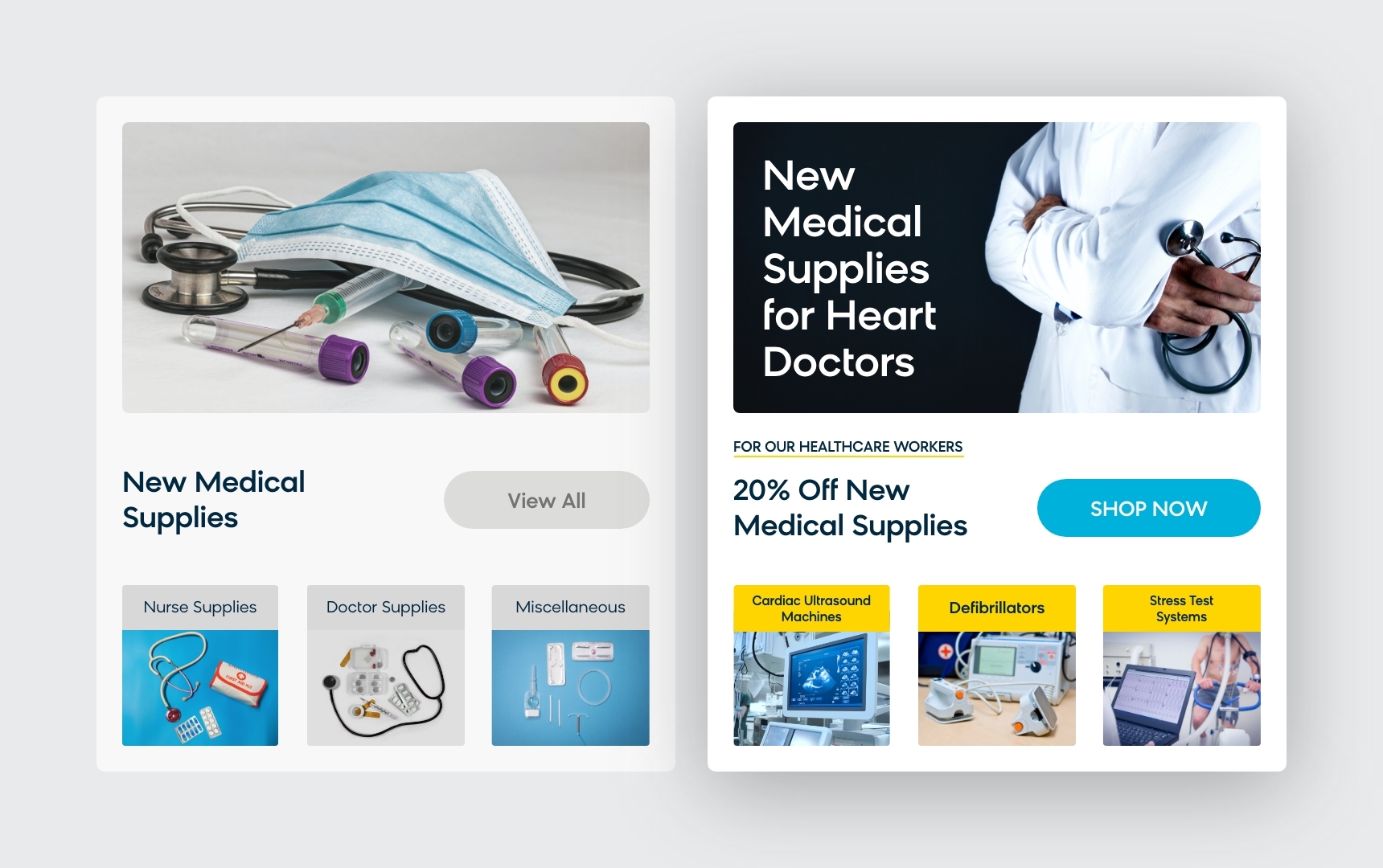
Once those patterns are identified, it is possible to expand the personalization of the experience quickly, tune it toward the buyer’s business and/or applications, and make it feel as if your distribution website truly knows them. Without personalization, B2B search results fail to account for specific use cases. No matter which industry the user is from, they’ll see only the “most popular” result across all segments, even if it’s not the best option for them. Bloomreach will help your brand leverage personalization to build trust with a feature called, “relevance by segment,” which allows you to rank search results based on segment data and serve different experiences to different segments of users.
Merchandising Capabilities
Historically, merchandising has not been a part of most B2B businesses, where sales were done in person by salespeople. The explosion of digital has raised the expectations of buyers, however, and it’s created new opportunities for merchandising to impact bottom-line profitability in B2B. Without merchandising talent, however, most B2B companies in the distribution industry have had little or no experience (or success) with merchandising on their websites.
Searchandising, or search merchandising, is all about how to display and list products on a website or app in a way that’s intuitive, relevant, and optimized for purchase. That’s why the B2B market could use a solution, like Bloomreach Discovery, to its advantage. Having a product search and merchandising tool that can support merchandising across all phases of ecommerce maturity will help you win, whether you’re using the algorithm only, training new merchandisers, or implementing a sophisticated and highly personalized merchandising strategy.
How Can Ecommerce Help Distributors’ Priorities?
B2B distributors have been under enormous pressure to transform their operations for quite some time, and the pandemic and shifting generations within the workforce have only added additional demand. While transforming digitally and refining your product discovery process is no simple task, it is one that is advantageous for many reasons, like the ones listed below.
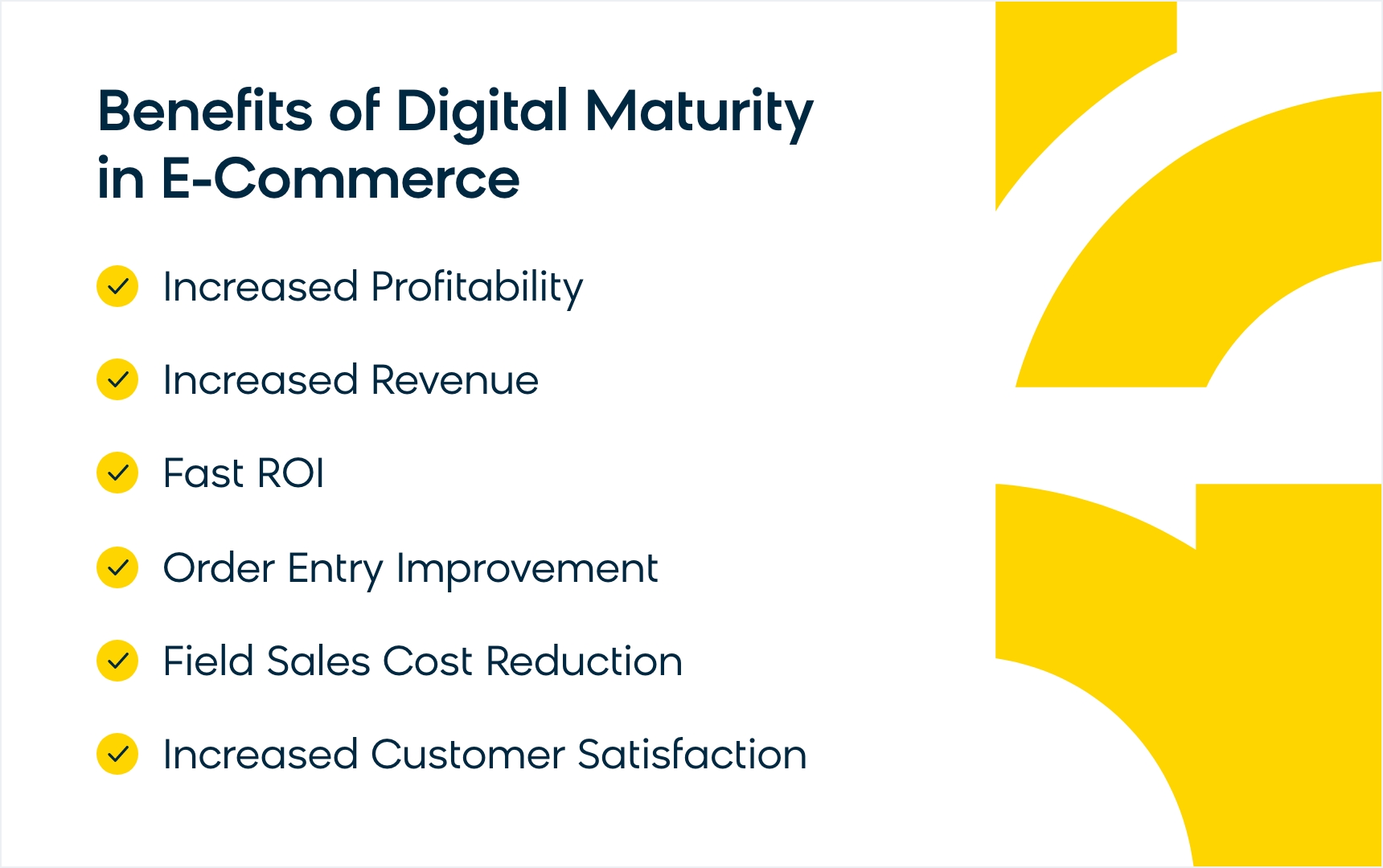
- Increased profitability - An effective ecommerce site leads to lower operational costs in the long run. Since tools like Bloomreach Discovery are self-service, you won’t have to worry about expanding your marketing, IT, or data analytics teams. Everything can be done by using our user-friendly dashboard, making your ecommerce channel a more profitable one with lower overhead.
- Increased revenue - Knowing more about your customers’ behaviors, tendencies, and preferences puts you in a position where you can recommend specific products to specific customers for specific applications — not just the “best selling item in X category” that is aggregated across all customers. Next-generation buyers with expectations of personalized purchase journeys expect to see this when they are buying products at work, too, and it will undoubtedly help build consumer trust to increase revenue.
- Fast ROI - When investing in technology, what matters is not just the long-term ROI, but how quickly you can start seeing that ROI and reap the benefits of your investment. Bloomreach has the fastest ROI of any product discovery solution due to three unique capabilities: our self-learning AI, our merchandising suite, and our broad industry experience with knowledge of every buying pattern across B2B. With these capabilities, your business will see the highest revenue per visitor of any search vendor on the market — with the least time and effort from your team.
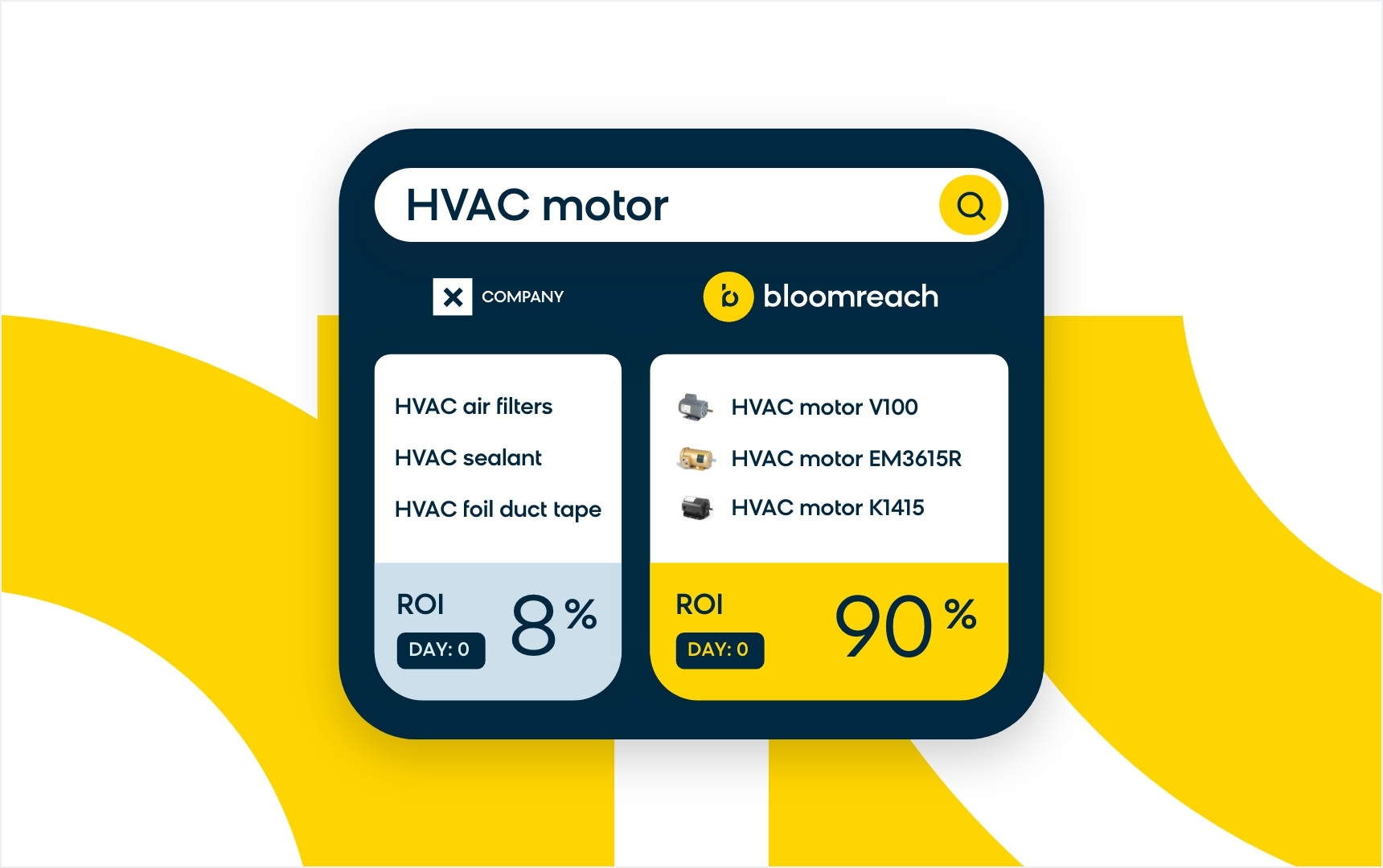
- Order entry improvement - With Bloomreach Discovery working in the back end of your ecommerce website, sales representatives can be more productive with the use of their time. Not only will they spend less time manually entering orders, but they can also direct their attention to more important tasks that cannot be automated as easily. Plus, with customers entering their own orders, you’ll reduce errors with order entry on your end.
- Field sales productivity - Did you know that you can reduce the headcount of sales reps by one for every two million dollars that you make in ecommerce revenue? And no, this doesn’t mean you have to get rid of sales altogether! Rather, you can be more precise and targeted in your hiring. Those reps already on board can be trained and repurposed for the prioritized tasks at hand, while the business development department works closely with your high-value prospects and customers.
- Increased customer satisfaction - The customer is everything in today’s digital landscape. This is why leading B2B companies with a great customer experience online do little to no advertising and can lean on satisfied customers’ word-of-mouth recommendations, which create enough new demand to drive growth. An effective ecommerce website also opens up new markets for your brand, whether it's brand-new territories or small to midsize businesses that would be unprofitable to serve using traditional outside sales tactics.
Conclusion
Discoverability is about more than Google Ads and search engine marketing. It applies to your ecommerce website, too. While digital transformation might seem like a scary concept on the surface, technology can make certain aspects of it, like product search and discovery, easier than you have ever imagined.
As buyers expect more from the online experience, distributors need to go beyond a digital catalog that displays thousands, and sometimes millions, of products on their ecommerce website. If you want to encourage purchases and nurture customer loyalty, you need to help buyers find the products they need for their specific industry and use case, and Bloomreach Discovery can help. Get started today by plugging your data into our search tool with our Search Impact Validation.
Found this useful? Subscribe to our newsletter or share it.

